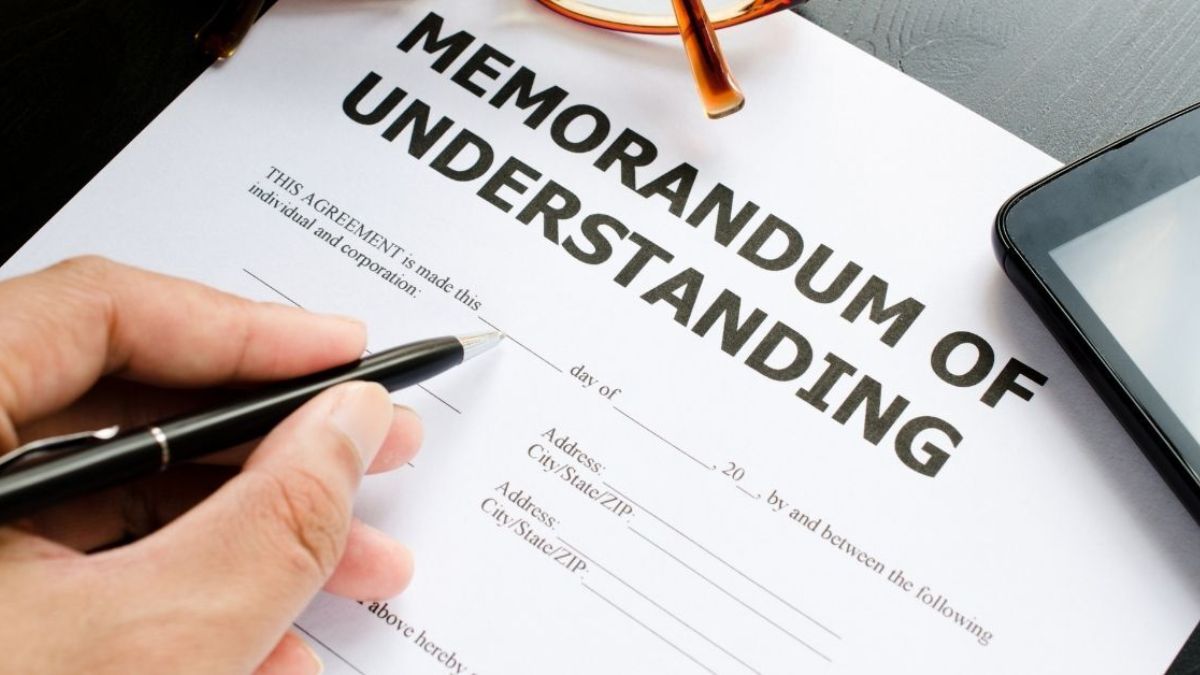A Memorandum of Understanding (MOU) is a crucial document in the business world, serving as a formal agreement between two or more parties to establish a cooperative relationship. While not legally binding like a contract, an MOU outlines the terms and details of the partnership, providing a clear framework for collaboration. This article will guide you through the process of creating an effective MOU, explaining all the important clauses in detail.
What is a Memorandum of Understanding (MOU)?
An MOU is a written agreement that outlines the intentions and expectations of the parties involved in a cooperative project or partnership. It is often used in business, government, and non-profit sectors to formalize collaborations without creating legally binding obligations. MOUs are valuable tools for clarifying roles, responsibilities, and goals, helping to prevent misunderstandings and conflicts down the line.
Important Clauses in an MOU
1. Introduction
The introduction provides an overview of the purpose and scope of the MOU. It typically includes a brief description of the parties involved, the nature of their relationship, and the objectives they aim to achieve through the agreement. This section sets the stage for the rest of the document, offering context and background information.
2. Definitions
This clause defines key terms used throughout the MOU to ensure clarity and prevent misinterpretations. Each term should be clearly and concisely defined, with any technical or industry-specific language explained. This helps all parties understand the document’s content and their respective obligations.
3. Purpose
The purpose clause outlines the specific goals and objectives of the MOU. It describes what the parties intend to achieve through their collaboration and provides a clear statement of the agreement’s overall intent. This section ensures that all parties have a mutual understanding of the MOU’s primary aims.
4. Scope of Work
This clause details the specific activities, tasks, and responsibilities each party will undertake to achieve the MOU’s objectives. It should include timelines, milestones, and deliverables, providing a comprehensive roadmap for the collaboration. This section is crucial for managing expectations and ensuring that all parties are aligned.
5. Roles and Responsibilities
The roles and responsibilities clause clearly delineates each party’s obligations and duties. It specifies who is responsible for what tasks, helping to prevent overlap and confusion. This section should be as detailed as possible, outlining specific roles, actions, and accountability measures.

Simplify Your Memorandum of Understanding Today!
Generate your Memorandum of Understanding with Legitt AI contract generator.
Start Your MOU Now!6. Duration and Termination
This clause specifies the duration of the MOU, including start and end dates, as well as conditions for extension or renewal. It also outlines the circumstances under which the MOU can be terminated by either party, including notice periods and termination procedures. This section ensures that all parties are aware of the MOU’s timeframe and how it can be concluded.
7. Confidentiality
The confidentiality clause outlines the terms under which sensitive information shared between the parties will be protected. It specifies what information is considered confidential, the obligations of each party to maintain confidentiality, and the duration of these obligations. This section is critical for safeguarding proprietary information and maintaining trust between the parties.
8. Intellectual Property
This clause addresses the ownership and use of intellectual property (IP) created or shared during the collaboration. It specifies who owns the IP, how it can be used, and any licensing arrangements. This section helps prevent disputes over IP rights and ensures that all parties understand their rights and obligations.
9. Dispute Resolution
The dispute resolution clause outlines the methods and procedures for resolving conflicts that may arise during the collaboration. It may include mediation, arbitration, or other forms of alternative dispute resolution (ADR). This section is essential for providing a clear pathway to resolving disagreements without resorting to litigation.

10. Amendments
This clause specifies the process for making changes or amendments to the MOU. It outlines how modifications can be proposed, reviewed, and approved by the parties. This section ensures that any changes to the agreement are documented and agreed upon, maintaining the MOU’s integrity.
11. Governing Law
The governing law clause identifies the legal jurisdiction that will govern the MOU and any disputes that may arise. It specifies which country’s or state’s laws will apply, providing a legal framework for interpreting the agreement. This section is important for determining how the MOU will be enforced.
Seal Your Memorandum of Understanding with Legitt AI
Sign MOUs quickly using Legitt AI electronic signature.
Sign MOUs Today
12. Signatures
The signatures clause is where the authorized representatives of each party sign the MOU, indicating their agreement to the terms outlined in the document. It typically includes the names, titles, and signatures of the representatives, as well as the date of signing. This section formalizes the MOU and signifies the parties’ commitment to the collaboration.
13. Miscellaneous Provisions
This clause includes any additional terms and conditions that do not fit into the other sections of the MOU. It may cover issues such as non-assignment, entire agreement, force majeure, and severability. This section ensures that all relevant aspects of the collaboration are addressed.
Did you find this article worthwhile? More engaging blogs about smart contracts on the blockchain, contract management software and electronic signatures can be found in the Legitt Blogs section. You may also contact Legitt to hire the best contract lifecycle management services and solutions along with free contract templates.
FAQs on Memorandum of Understanding
What is the difference between an MOU and a contract?
An MOU is a formal agreement outlining the intentions and expectations of the parties involved but is generally not legally binding. A contract, on the other hand, is a legally enforceable agreement that creates binding obligations. MOUs are often used to establish a framework for cooperation, while contracts are used for specific, enforceable commitments.
Why is an MOU important?
An MOU is important because it clarifies the roles, responsibilities, and expectations of the parties involved in a collaboration. It helps prevent misunderstandings and conflicts by providing a clear framework for the relationship. MOUs also serve as a reference document, guiding the parties throughout their partnership.
Can an MOU be legally binding?
While MOUs are generally not legally binding, they can include binding provisions if the parties choose to do so. The binding nature of an MOU depends on the language used and the intent of the parties. Including phrases like "binding agreement" and specifying enforceable terms can create legal obligations.
What should be included in the scope of work clause?
The scope of work clause should include a detailed description of the activities, tasks, and responsibilities each party will undertake. It should also outline timelines, milestones, and deliverables to provide a clear roadmap for the collaboration. This section ensures that all parties are aligned and aware of their obligations.
How can disputes be resolved in an MOU?
Disputes in an MOU can be resolved through various methods outlined in the dispute resolution clause, such as mediation, arbitration, or other forms of alternative dispute resolution (ADR). This clause provides a clear pathway for resolving disagreements without resorting to litigation. It helps maintain a cooperative relationship between the parties.
What is the purpose of the confidentiality clause?
The confidentiality clause protects sensitive information shared between the parties during the collaboration. It specifies what information is considered confidential, the obligations of each party to maintain confidentiality, and the duration of these obligations. This clause is critical for safeguarding proprietary information and maintaining trust.
Who owns the intellectual property created during the collaboration?
The intellectual property clause addresses the ownership and use of intellectual property (IP) created or shared during the collaboration. It specifies who owns the IP, how it can be used, and any licensing arrangements. This clause helps prevent disputes over IP rights and ensures that all parties understand their rights and obligations.
How long does an MOU last?
The duration and termination clause specifies the start and end dates of the MOU, as well as conditions for extension or renewal. It also outlines the circumstances under which the MOU can be terminated by either party, including notice periods and termination procedures. This clause ensures that all parties are aware of the MOU's timeframe.
What happens if the terms of the MOU need to be changed?
The amendments clause specifies the process for making changes or amendments to the MOU. It outlines how modifications can be proposed, reviewed, and approved by the parties. This clause ensures that any changes to the agreement are documented and agreed upon, maintaining the MOU's integrity.
What is the governing law clause?
The governing law clause identifies the legal jurisdiction that will govern the MOU and any disputes that may arise. It specifies which country's or state's laws will apply, providing a legal framework for interpreting the agreement. This clause is important for determining how the MOU will be enforced.
Why are signatures important in an MOU?
Signatures are important because they indicate the authorized representatives' agreement to the terms outlined in the MOU. The signatures clause includes the names, titles, and signatures of the representatives, as well as the date of signing. This formalizes the MOU and signifies the parties' commitment to the collaboration.
Can an MOU be used in court?
While MOUs are generally not legally binding, they can be used as evidence in court to demonstrate the parties' intentions and expectations. If the MOU includes binding provisions, it can create enforceable obligations. The enforceability of an MOU depends on the language used and the intent of the parties.
What are miscellaneous provisions in an MOU?
Miscellaneous provisions include any additional terms and conditions that do not fit into the other sections of the MOU. These may cover issues such as non-assignment, entire agreement, force majeure, and severability. This clause ensures that all relevant aspects of the collaboration are addressed.
How detailed should an MOU be?
An MOU should be detailed enough to clearly outline the roles, responsibilities, and expectations of the parties involved. It should provide enough information to prevent misunderstandings and conflicts, but it does not need to be as detailed as a legally binding contract. The level of detail depends on the nature of the collaboration and the preferences of the parties.
Can an MOU be extended or renewed?
Yes, an MOU can be extended or renewed if the parties agree to do so. The duration and termination clause should specify the conditions for extension or renewal, including any notice periods or procedures. This ensures that all parties are aware of the MOU's timeframe and any potential extensions.
